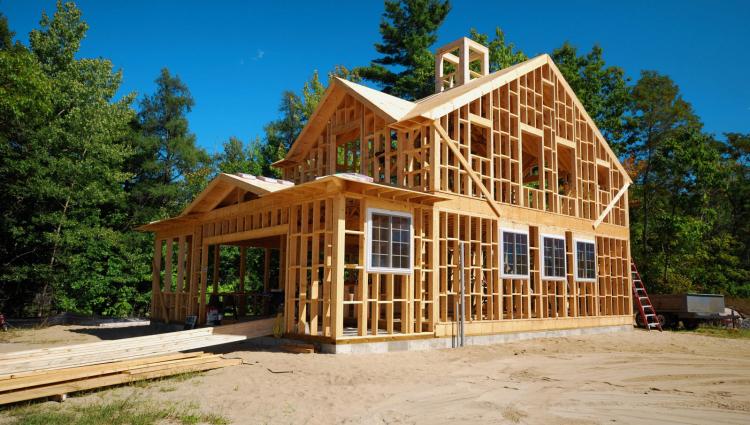Ten years ago, as an ardent Frank Lloyd Wright admirer (much to the disapproval of my undergraduate instructors), I enrolled as a Master of Architecture student at Taliesin, the Frank Lloyd Wright School of Architecture. While my time at Taliesin would be short-lived, my appreciation for the School has only grown over the years as I’ve witnessed a homogeneity in skillsets of young graduates entering the workforce. With the recent announcement of Taliesin closing after 88 years of training architects in the tradition of Frank Lloyd Wright, the profession of architecture is losing more than just another NAAB-accredited Master of Architecture—we are losing a valuable counterpoint to the traditional model of architecture training.
“We are losing a valuable counterpoint to the traditional model of architecture training.”
For those who have never been to either Taliesin in Spring Green, Wisconsin, or Taliesin West in Scottsdale, Arizona—Wright’s personal summer and winter homes, respectively—the experience is not unlike stepping into a mysterious, anachronistic world. The buildings are sprawling, seemingly primitive in their construction, and so well integrated into their surrounding landscapes that it is hard to imagine a time when they did not exist. Within the confines of each campus, one is only reminded of what year it is by the clothes you are wearing, the smart devices you own, or the hourly tour groups that routinely tap on glass windows at you like some unlucky fish in a bowl. Life at Taliesin is simple, and time moves at its own sluggish pace, a welcome contrast to the expansive metropolis of Phoenix just beyond the desert’s edge.
Built in 1937, Taliesin West was an experiment in desert living that evolved at the hands of master architect Frank Lloyd Wright and his apprentices until he passed in 1959. Conceptualized as a refuge from the harsh winters of the Midwest, the complex—which grew to include a drafting studio, dining facilities, three theaters, a workshop, Wright’s office and private living quarters, and apprentice and staff residences—takes direct inspiration from the arid landscape.
This feeling of trapped time is heightened by the commune of former apprentices, referred to as the Fellowship, and current students and instructors who still cohabitate these buildings. This generational cross-section of Wright devotees shares the responsibility of not only maintaining the facilities, but also ensuring the survival of Wright’s legacy as both master architect and educator. While these two demographics are distinct, both participate in daily activities that benefit their shared existence while on campus, such as communal meals, general maintenance, and co-working spaces within the studios. While recent years have dwindled the number of Fellowship members still alive, the Fellowship has provided a built-in mentorship program that has handed down Wrightian traditions and stories for generations.
As a student at Taliesin, I was pleasantly surprised to learn that the design culture was experimental, progressive, and not solely entrenched in Wright philosophy. The education model encouraged students to experience and learn from the Wright campuses and take away principles that could be expanded upon. For generations, the “Learn by Doing” credo of the School has pushed students to explore ideas and try things to further their own education. Many times, this leads to opportunities for hands-on construction or historic preservation experience by working on existing buildings and student shelter projects throughout the campuses—something noticeably absent in many other Master of Architecture degree programs in the U.S.
The Cabaret Theater, used for music and theater, displays the thickness of the exterior walls with buttressing structural supports extending to the roof.
What was painfully obvious to me then as a student and still persisting to this day, what has led to this unfortunate closure of an esteemed institution, was that Wright could never have anticipated a bureaucratic regulating body like the Higher Learning Commission (HLC) pitting the apprenticeship program he founded in 1932 in an adversarial position with the Frank Lloyd Wright Foundation he established in 1940. The two entities, by their very nature, have different missions from one another. One, the School, is trying to further Wright’s principles and expand his legacy through encouraging aspiring architects to design, build, and “Learn by Doing” on the campuses’ buildings and land. The other, the Foundation, is trying to preserve and protect the buildings and maintain the legacy of the most revered American architect to ever live. With the demand from the HLC for the School to become autonomous from the Foundation, it has essentially forced these intertwined organizations to answer the question: How is Wright’s legacy best served?
“With the demand for the School to become autonomous from the Foundation, it has essentially forced these intertwined organizations to answer the question: How is Wright’s legacy best served?”
My time at Taliesin was short and punctuated by highs and lows that only an institution caught in an existential crisis could create. While there were moments of learning and community that have had a lasting effect on my career and personal life, I found it difficult to be at a school with limited technology resources, opportunities for cross-disciplinary research, and financial assistance. But what ultimately clarified my decision to leave was the impending unknown status of the School as it wrestled with the Foundation for autonomy. Unable to get a clear outlook for whether the School would continue to stay in business, I made the difficult decision to leave my dream of being educated at Taliesin behind.
What I realize about Taliesin now that I couldn’t grasp when I was a student is how unique the experience was. Once you attend a more traditional university setting for architecture and work in the profession for several years, it becomes noticeable that most young architecture graduates are having very similar education experiences at different schools. They are learning the same software, reading the same books, and being prepared to work in a firm in the exact same way. Taliesin has always been my unique experience that sets me apart as a designer and architect. Albeit short, my time there helped create my own personal perspective on architecture that has been admired by employers, institutions, and clients alike—something I deeply value today.
Rich red hues and earthy sandy tones create a close relationship between the buildings and the landscape.
The news that Taliesin is officially closing shouldn’t just be an unfortunate situation, it should sadden the profession that we are losing such a unique viewpoint in architecture. It should be alarming that such an important figure as Wright will be further limited to hour-long house tours and redundant writings on his work. We, as architects, should be asking ourselves whether these buildings are more valuable to our collective design future as house museums for tourists or as laboratories for students who can learn and carry on traditions by living, working, and learning within these iconic structures. By shutting down the School, the Foundation runs the risk of further marginalizing Wright’s legacy as an idiosyncratic historical figure who has nothing left to teach us about architectural design—a point with which I strongly disagree.
“It should be alarming that such an important figure as Wright will be further limited to hour-long house tours and redundant writings on his work.”
I have every reason to be in support of Taliesin’s closure. I attended the school with a specific goal in mind and left without a degree. But even with my specific history and short tenure at the institution, I feel immensely disappointed at the inability for these two organizations to come to an agreement that supports the very thing they have been entrusted to care for: the legacy of Frank Lloyd Wright. Without the life force of the school to carry on this tradition and without the community at these campuses, these buildings offer far less value to the world of architecture or to the legacy of Frank Lloyd Wright.
Based in Pittsburgh, Pennsylvania, Gabriel Nolle is the principal and owner of GNAW (Gabriel Nolle Architecture Workshop).
Related Reading:
Tour Frank Lloyd Wright’s Spectacular Desert Retreat and School in Arizona
Frank Lloyd Wright’s School of Architecture Is Closing After 88 Years
Over 80 Years Later, Fallingwater Still Has Lessons to Teach Us







